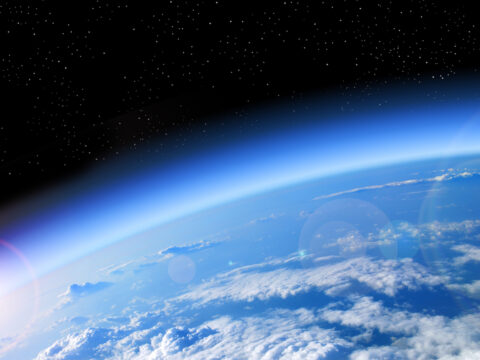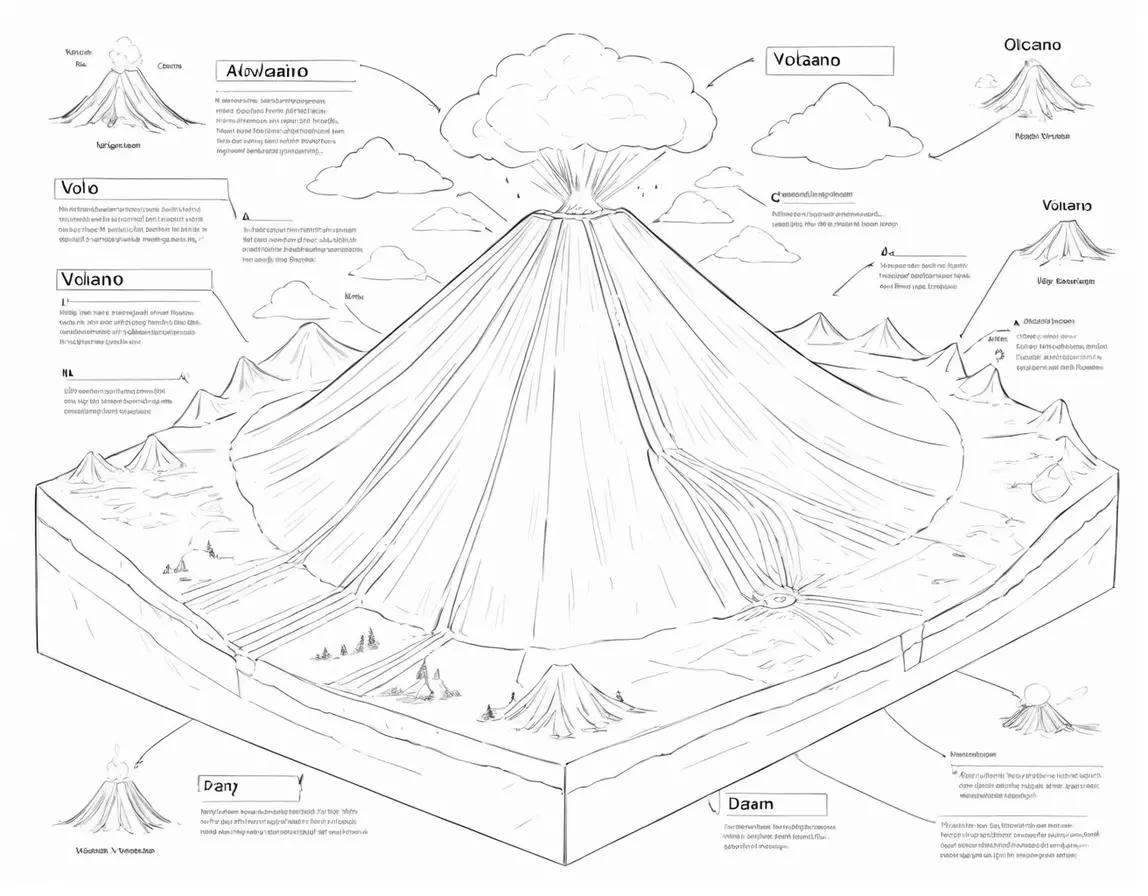
The soil is not just the basis for agriculture but also plays an important role in safeguarding the air we breathe, the water we drink, the food we consume, and the climate we live in.
Conversely, unwholesome soil might lead to serious issues. Consider the Dust Bowl years of the 1930s. Millions of acres of once-productive farmland in the Midwest and Southern Plains dried up as a result of over-plowing, bad land management, and drought over many years. Some estimates put the amount of soil moved by a single dust storm at 300 million tons, reaching from the West Coast to the East.
Thousands of agricultural animals perished when they were exposed to the deadly tiny dust particles, and nearly 7,000 individuals sadly lost their lives to the disease known as “dust pneumonia.”
The erosion of our soils poses a present danger to the stability of our food supplies. Incredibly, it can take hundreds of years for just an inch of topsoil to form, and experts have calculated that the United States is losing soil at a rate 10 times quicker than nature can replenish it.
If soil degradation rates keep increasing, all of the world’s topsoil might be gone in less than 60 years, according to soil specialists. Fortunately, there are numerous tried-and-true methods we can employ to protect our soil and ensure that it will continue to meet the needs of future generations.
Let’s define erosion
Soil, rock, and sediment are eroded and moved over long distances by water and wind, and occasionally this process is accelerated by improper land management and other human activities. In truth, the Colorado River constructed the Grand Canyon via millions of years of erosion by cutting deep and broad through the rock, and glacial erosion shaped the famous Yosemite Valley.
Materials are worn away but not transferred during weathering, making it distinct from erosion. Meanwhile, erosion occurs when natural processes remove earthen objects from their original locations.
Erosion of the earth’s topsoil, the layer of soil that contains the nutrients necessary for plant and animal growth, is what we call soil erosion. The composition of the soil, the presence of plants, and the force of the wind and rain all play a role in the pace of soil erosion. We have the ability (and the responsibility) to address one of the world’s most pressing environmental problems—soil erosion—because our actions can affect its rate.
Why Does Erosion Happen?
Exposed earth is particularly vulnerable to wind, rain, and water erosion. Soil erosion is a problem in many areas because of human activities, including farming and land clearing. For instance, farmers often leave tilled soil exposed to the elements for weeks or months before and after a growing season.
Large swaths of land can be left without the ground-covering plants that would otherwise hold the soil in place due to overgrazing by agricultural animals like cattle and sheep. Deforestation, especially clearcutting, a common practice in the industrial logging industry, also has severe effects on soil health. When trees are cut down, the soil is left vulnerable to erosion since there are no longer any anchoring roots to hold it in place.
Erosion can also be caused by the weather. Soil can be disturbed by variations in precipitation and water levels; topsoil can be eroded by temperature extremes; and vegetation can be stunted by lengthy droughts.
Repercussions of Erosion
Erosion of soil degrades soil ecosystems and destroys arable land (land that can be used to grow crops). According to research, half of the Midwest’s topsoil has been lost in the previous 50 years owing to erosion made worse by human activity. This region is home to some of the most productive farming in the United States. Severe soil erosion, if left unchecked, can reduce biodiversity above, within, and below the topsoil, destroy crops, and have a detrimental effect on community resilience and livelihoods.
In which direction does the dirt end up? Agriculture researchers estimate that over 60% of eroded soil eventually makes its way into rivers, streams, and lakes, carrying with it any and all agrochemicals and other pollutants that may have been applied to the soil. This can lead to dangerous algal blooms and polluted waterways.
The normal flow of waterways can be obstructed by dirt that has made its way into the water, which can then lead to more flooding. What doesn’t get absorbed by crops or carried by waterways may wind up in nearby neighborhoods.
Deflation of land due to water erosion
Soil erosion takes place when water (such as precipitation or melted snow) washes away the top layer of soil. Soil particles are more easily moved or carried away when there is a greater volume of water moving across the ground. Vacant land, such as farm fields after harvest, is more susceptible to water erosion because of the lack of vegetation to prevent it.
Rainstorms cause more runoff and erosion when there is no vegetation to soak up the water, keep the soil in place, or reduce the force of the falling raindrops. Soil erosion can be accelerated by extreme meteorological conditions such as severe rainfall, flash floods, and quick snowmelt.
Causes of water erosion
Multiple elements must be present for water to erode and damage agricultural land. If heavy storms bring a lot of rain and runoff water, the land is more likely to be damaged. The erodibility of a field’s soil is affected not only by its composition but also by its quality and texture, which is determined by the size of the soil particles and how loosely or tightly they are compacted.
The rate and intensity of water runoff can also be affected by other factors, such as the length and slope of a piece of land. (This is why farms built on steep hillsides are at risk of soil erosion and washouts; generally the result of a lack of arable land.)
The effects of water on a farm field can be mitigated through the use of vegetation, both in the form of regular cropping and the strategic deployment of cover crops. To reduce soil erosion, land managers might employ selective tillage methods. Soil tilling is a common agricultural practice that helps farmers do things like prevent weed growth, loosen soil, and plant seeds.
Decades of the agricultural study suggest that little is more when it comes to preventing soil erosion. That is to say, if we can keep farm fields free of as much mechanical interference, we may be able to keep the soil intact for longer.
Types of Water Erosion That Are Usually Encountered
Water is necessary for life and agriculture, but it also has a high corrosive potential. Each raindrop has the capacity to alter the composition of the soil. Four typical forms of water erosion are described below.
Sheet erosion is the process through which raindrops and shallow surface water flow remove soil in thin, uniform layers. Without the material being deposited nearby or the damage being rather severe, it may be difficult to identify sheet erosion. Most of the soil’s nutrients and organic matter are lost because the fine soil particles are eroded away.
The channels formed by rill erosion are often smaller than those formed by gully erosion. Rill erosion may disappear over time, or in more severe cases, it can be tilled out.
Erosion causes gullies to form when water flows in a zigzag pattern across exposed terrain. The term “gully erosion” can indicate the movement of soil along grooves formed by intense rainfall or by human-made drainage lines.
Bank erosion is the gradual undercutting, scouring, and slumping of riverbanks and drainage channels caused by the powerful flow of water in both natural and man-made waterways. The situation can worsen when we cut down trees and grass and let cattle graze too heavily in areas near waterways.
All across the world, land is in danger from bank erosion. In southwestern Bangladesh, for instance, the clay-like soil is especially susceptible to erosion during the monsoon season. Riverbank erosion causes the annual displacement of thousands of people and has a terrible effect on agriculture.
Water erosion’s aftereffects
The extent to which soil erosion has an impact is proportional to the nature and quantity of topsoil that has been lost. Loss of topsoil reduces a soil’s capacity to retain water and nutrients, which can have a devastating effect on crop establishment, growth, and output. It is no longer possible to grow crops on some soils that have been severely degraded.
The soil’s ability to absorb water is reduced by erosion, which can lead to flooding and generate enormous amounts of standing water. It can be difficult or impossible to plant fresh crops if areas are flooded for an extended period of time during the planting season.
The effects of too much fertilizer on aquatic ecosystems and human health can be devastating. High quantities of manure and fertilizer cause dangerous algal blooms every summer, which kill marine life by reducing oxygen levels in the ocean and also make fresh water unfit for drinking and recreational use.
Wind erosion
Loose soil is transported from one area to another by the wind as a natural occurrence. In fact, massive, destructive dust storms can be created by winds that are sufficiently powerful. Millions of tons of soil are lost every year due to wind erosion in North America’s drier regions. According to one study, the growth of croplands and the prevalence of droughts over the past two decades have contributed to an increase in the frequency and severity of dust storms.
Factors that increase wind erosion
Loose, dry, and finely granulated soils are less suited for agricultural use since they are more prone to erosion and provide smooth surfaces. Roughness, clumps, and ridges in the soil are all structural features that help absorb wind energy, hence reducing erosion.
Vegetated fields or those surrounded by hedges and trees (termed shelterbelts) are significantly less susceptible to wind damage. Finally, temperature has an important effect on wind erosion; research suggests that a warmer climate will increase the risk of wind erosion on dry and semiarid terrain.
Wind erosion’s repercussions
Wind erosion, like water erosion, can damage both the fields from which it collects material and the regions to which the soil (along with any minerals or toxins it may have picked up) is deposited. It can also affect people’s health by decreasing air quality, reducing visibility, and making it harder to breathe.
Damage to crops Reduced crop yields can arise from soil becoming airborne due to wind, which can sandblast tender leaves and stems or bury plants and seeds.
Large dust storms can develop and persist for a number of hours whenever dry, granular soil particles are dispersed throughout the atmosphere. Crops and cattle are vulnerable to these storms, and people are at risk for respiratory illnesses like asthma attacks and dust pneumonia.
Wind can disperse agricultural chemicals like pesticides, herbicides, and fertilizers far beyond their original application area, a phenomenon known as “chemical drift.” Because of this, it can be difficult for farmers to cut back on pesticide use in their fields, and it can also be problematic for populations located in close proximity to agricultural areas.
Weather shifts and soil loss
The catastrophic effects of climate change, such as increased flooding, longer wildfire seasons, more violent droughts, and coastline erosion owing to sea level rise, have already been felt by many communities across the United States. Even centuries-old methods of farming are being threatened by climate change. Here is how the effects of erosion are exacerbated by the effects of climate change.
Furthermore, soil erosion might contribute to global warming. A significant amount of carbon dioxide, organic matter, and microorganisms can be stored in soil. Deforestation and improper farming methods are two examples of how soil degradation can lead to carbon emissions. The loss of healthy soil due to wind and water erosion, poor management, wildfire, or any other cause symbolizes the loss of a valuable resource in the fight against climate change.
Stopping Erosion
Erosion of soil occurs when fluids like water or wind push on soil that is held in place by gravity. Our ability to keep soil in place depends on our success in reducing or eliminating erosional forces and increasing soil stability.
Practices and Procedures for Preventing Erosion
Many of the methods outlined below for preventing erosion are important to the principles of regenerative agriculture. It is important to note that identifying the processes responsible for erosion is essential to developing effective remedies.
Organic matter should be added to soil because healthy soil has a balance of water, air, minerals, and organic matter. Organic matter in the soil, derived from dead plants and animals, acts as a glue that maintains the soil in place. Soil erosion can be cut by 20 to 33 percent if organic matter content is raised from 1 to 3 percent, according to the literature.
The cultivation of vegetation: Plants on the ground or in shrubs and hedges can protect against corrosive winds. Cover crops and other methods of maintaining continuous ground cover aid in the process of binding soil to roots.
Make use of erosion mats: Sometimes called a “bio-blanket,” this ground cover protects the soil and gives plants a place to flourish in areas where they would otherwise die. When huge areas are left bare and susceptible to wind and water erosion, such as on solar farms and building sites, this erosion control strategy is generally effective.
Adopt a no-till or minimal-till approach: Although farmers have been plowing their fields for generations, agricultural scientists have recently demonstrated that no-till farming may be preferable.
Farmers have seen improvements in both crop yield and water quality as a result of less soil disturbance leading to less erosion and runoff. Nitrogen and other essential soil nutrients may be preserved through the use of no-till techniques.
Reduce erosion by employing best grazing practices: The livestock are moved from one pasture paddock to another as part of the rotational grazing strategy. Soil erosion and compacting are kept to a minimum by allowing each paddock a period of rest during which it is not disturbed and during which it is given a chance to recover. Putting up fencing and building bridges across streams are two more effective strategies for protecting pastures from erosion.
Further Information Regarding Protective Crops
Cover cropping is a time-honored method of farming that has been used to improve soil quality and defend against erosion for ages. Without a cover crop, the land would be left barren after the cash crop has been harvested. The primary goal is to prevent soil erosion by retaining it where it is and preventing roots from being uprooted.
However, there are other advantages to growing cover crops. By supplying essential nutrients to the soil, they lessen the need for the farmer to use artificial and expensive inputs. They improve soil health by decreasing the spread of harmful bacteria and fungi and increasing biodiversity.
Carbon sequestration is another way in which cover crops combat global warming. The soil acts as a carbon sink because it stores the carbon that plants use to make organic matter from carbon dioxide.
Cover crops come in many forms, but the most common ones include legumes, grasses, buckwheat, brassicas, and rye.



















